Rui Alexandre Gonçalves, PhD, MBA, is an aquaculture leader whose career has spanned hands-on farming, academic research, and strategic planning in the global agri-food sector. As Deputy Director of the Aquaculture Department at the Singapore Food Agency’s Marine Aquaculture Centre (MAC), he is responsible for driving innovation and shaping long-term strategies for one of Asia’s most dynamic aquaculture ecosystems.
With a PhD focused on the effects of mycotoxins on aquatic species and an executive MBA in Food & Agribusiness from TIAS Business School and Wageningen University & Research, Rui brings a rare combination of technical depth and market insight. His professional journey—from hatchery operations in Europe to nutrition research, business development, and public sector leadership—has given him a holistic view of the challenges and opportunities facing modern aquaculture.
In this interview, Rui shares his insights on the evolving risk landscape of mycotoxins, the importance of aligning science with strategy, and the critical role aquaculture plays in ensuring food system resilience in an increasingly complex world.

Aquaculture is playing an increasingly central role in global food security, but the challenges it faces are rapidly evolving. How do you see the role of feed safety— particularly regarding mycotoxins—shifting in this new landscape marked by innovation, intensification, and sustainability goals?
Feed safety is central to the profitability and economic sustainability of the aquaculture sector.
As the industry continues to evolve, driven by innovation, intensification, and sustainability goals, ensuring the safety and quality of feed ingredients has never been more critical.
![]() Mycotoxins, often underestimated, are a growing concern within the sector.
Mycotoxins, often underestimated, are a growing concern within the sector.
The occurrence of mycotoxins in aquaculture feeds is well-documented and mirrors that of the livestock sector, a fact supported by years of survey data.
⇒ This is not surprising, as both sectors often rely on similar plant-based raw materials, particularly in the case of aquaculture low-trophic species.
As the industry faces increasing pressure to reduce its dependence on marine-derived ingredients, the inclusion of more plant-based meals has become a key strategy to support growth.
While this shift is vital for sustainability, it also raises the risk of mycotoxin contamination, as certain crops used in these formulations are more susceptible to fungal infections that produce mycotoxins.
The carry-over effects of these toxins, even at low levels, can have a significant impact on fish health, growth, and immunity, ultimately affecting feed efficiency and product quality.
![]() This not only compromises the profitability of aquaculture operations but also challenges the sector’s long-term sustainability. Therefore, in this rapidly changing landscape, mitigating mycotoxin risks is crucial.
This not only compromises the profitability of aquaculture operations but also challenges the sector’s long-term sustainability. Therefore, in this rapidly changing landscape, mitigating mycotoxin risks is crucial.

You have worked across multiple continents and sectors—from hatcheries and research labs to business strategy and public innovation. How has this diverse experience shaped your perspective on managing risks such as mycotoxins in aquaculture?
A very interesting question!
 I believe my professional journey has provided me with a unique, systems-level perspective on risk management in aquaculture, having had the privilege to approach the topic from multiple, complementary angles.
I believe my professional journey has provided me with a unique, systems-level perspective on risk management in aquaculture, having had the privilege to approach the topic from multiple, complementary angles.
When it comes to issues like mycotoxins, this diversity of experience has taught me that technical solutions alone are rarely sufficient.
The effectiveness of risk management strategies depends just as much on market structure, regulatory frameworks, farmer awareness, and supply chain dynamics as it does on science.
For example:
 In highly integrated systems or in countries where public institutions actively support innovation and enforcement, it is easier to introduce preventative strategies and align incentives across the value chain.
In highly integrated systems or in countries where public institutions actively support innovation and enforcement, it is easier to introduce preventative strategies and align incentives across the value chain. In contrast, in fragmented markets— such as those in many parts of Southeast Asia—economic incentives for robust mycotoxin control are often weak, even when technical tools are available.
In contrast, in fragmented markets— such as those in many parts of Southeast Asia—economic incentives for robust mycotoxin control are often weak, even when technical tools are available.
Having practical, hands-on experience in the field is a significant advantage, as it deepens one’s understanding of both the complexity of farming methods and the mindset and motivations of farmers and feed millers.
For instance, it becomes clear how subclinical impacts—such as those caused by mycotoxins—can easily go unnoticed in busy farm environments, especially in systems with limited monitoring capacity.
That realization drove me early on to advocate for more realistic risk assessments, emphasizing the importance of testing under field-relevant contamination scenarios rather than idealized laboratory conditions.
Bridging science, strategy, and operations has only reinforced my conviction that effective risk management in aquaculture must be multi-layered— anchored in sound science, informed by on-the-ground realities, supported by economic incentives, and underpinned by clear policy frameworks.
 That intersection is where both the complexity and the greatest opportunities lie.
That intersection is where both the complexity and the greatest opportunities lie.


Your doctoral research focused on mycotoxins in aquatic species at a time when the topic was still relatively underexplored. What were some of the key challenges you encountered early on, and how do they compare to the ones the industry is facing today?
I was fortunate to have the company I worked with at the time support my PhD on mycotoxins in aquaculture—an area that was still relatively underexplored.
Back then, awareness and scientific understanding of mycotoxins in aquatic species were quite limited. Since then, the field has evolved considerably, with many more researchers dedicating their efforts to studying the impact of mycotoxins on aquaculture species.
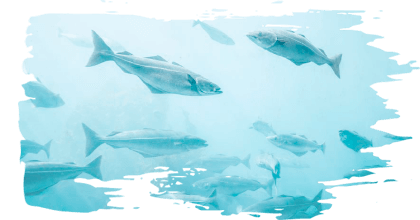
One of the main challenges we faced early on was pushing for a paradigm shift in how mycotoxin risks were assessed.
At the time, much of the academic literature relied on in vivo trials using unrealistically high contamination levels.
While these studies were valuable from a toxicological standpoint, they did not reflect actual exposure scenarios encountered on farms.
 Our goal was to bring more realism into the discussion by conducting in vivo studies with contamination levels that mirrored what was typically found in commercial aquafeeds.
Our goal was to bring more realism into the discussion by conducting in vivo studies with contamination levels that mirrored what was typically found in commercial aquafeeds.
Chronic exposure to low levels of mycotoxins was a major blind spot in the literature, and addressing it posed both scientific and communication challenges.
Today, I am encouraged to see a growing number of studies focusing on more realistic contamination levels.
 This shift is crucial, as it provides the industry with more practical insights for risk management and feed formulation.
This shift is crucial, as it provides the industry with more practical insights for risk management and feed formulation.
Although I am no longer fully immersed in the topic, I continue to follow the research closely and occasionally contribute.
There is still a great deal to uncover—particularly:
 Species-specific responses
Species-specific responses Synergistic effects between mycotoxins
Synergistic effects between mycotoxins The development of effective mitigation strategies
The development of effective mitigation strategies
It remains a fascinating and highly relevant field of work!


Despite being a well-known feed safety issue, mycotoxins still tend to be overlooked in aquaculture. What do you think continues to hold back broader industry engagement?
That is an excellent—and complex—question to answer.
In my view, there are three main factors holding back broader engagement with mycotoxin management in the aquaculture sector:
KNOWLEDGE GAPS IN THE VALUE CHAIN
Many stakeholders—especially feed mills dedicated exclusively to aquafeeds—still lack a comprehensive understanding of mycotoxin contamination pathways and the overall prevalence of mycotoxins in commonly used raw materials.
This is particularly true for locally sourced feedstuffs in certain regions.
For instance, in the Asia-Pacific region, ingredients like peanut cakes and various rice by-products are frequently used, and these are known to pose higher mycotoxin risks.
Without proper awareness and regular monitoring, these risks often go unaddressed. However, it is understandable that such monitoring comes with a cost.
![]() In certain cases, feed mills may lack the margins to accommodate such monitoring programs.
In certain cases, feed mills may lack the margins to accommodate such monitoring programs.
SUBCLINICAL AND NON-SPECIFIC SYMPTOMS
One of the key challenges in aquaculture is that mycotoxicosis in aquatic species tends to present subclinically.
Even in the most sensitive species, symptoms are typically subtle—such as gut and liver inflammation—leading to:
 Reduced feed intake
Reduced feed intake Slower growth
Slower growth Potential immune suppression
Potential immune suppression
In more controlled systems, these behavioral or physiological changes may be detected.
However, in most aquaculture settings— where robust data collection and health monitoring systems are still developing—such signs (e.g., reduced appetite or slower growth) are rarely attributed to mycotoxin exposure.
⇒ Instead, secondary infections caused by opportunistic pathogens like Vibrio spp. are often seen as the primary issue, with mycotoxins overlooked as a contributing factor.
LACK OF ECONOMIC INCENTIVES
A third factor is the absence of clear economic incentives to prioritize mycotoxin management.
I recently co-authored a scientific paper with Dr. Albert Tacon, titled “Navigating Mycotoxin Regulations in Aquaculture: Balancing Stricter Legislation from an Economic Theory Perspective”, which is currently under publication.
 The paper explores how weak regulatory frameworks—and the limited presence of market-based rewards or penalties (commonly referred to as “economic incentives”)—fail to generate the momentum needed to drive meaningful change.
The paper explores how weak regulatory frameworks—and the limited presence of market-based rewards or penalties (commonly referred to as “economic incentives”)—fail to generate the momentum needed to drive meaningful change.
Particularly for non-integrated aquaculture companies, there is often no direct competitive advantage to implementing a rigorous mycotoxin management program.
![]() Without regulatory pressure or clear market benefits, the motivation to invest in preventive strategies remains low.
Without regulatory pressure or clear market benefits, the motivation to invest in preventive strategies remains low.
I encourage readers to keep an eye out for the paper, as it delves deeper into these dynamics.

Tropical and subtropical systems present unique conditions for mycotoxin development. What are the most pressing challenges in these regions, particularly in Southeast Asia?
It is absolutely true that in tropical and subtropical regions, storage-related mycotoxins—such as aflatoxins (AF) and ochratoxin A (OTA)— are often cited as the primary concern.
While these toxins can indeed thrive under warm and humid conditions, the reality on the ground is more nuanced.
Industry surveys across Southeast Asia and other tropical regions have consistently shown a rising prevalence of Fusarium-derived mycotoxins —particularly:
 Deoxynivalenol (DON)
Deoxynivalenol (DON)
 Fumonisins (FUM)
Fumonisins (FUM)
 Zearalenone (ZEN)
Zearalenone (ZEN)
This trend suggests that the issue may lie less in poor storage conditions and more in the intrinsic contamination of raw materials entering the feed supply chain.
Interestingly, in much of Southeast Asia, storage mycotoxins may be less problematic than initially assumed. This could be attributed to a combination of factors:
 Improved feed mill practices.
Improved feed mill practices. Increased awareness of these storage-related toxins (e.g., the routine use of mycotoxin binders).
Increased awareness of these storage-related toxins (e.g., the routine use of mycotoxin binders). Rapid turnover of feed at the farm level, which limits the time available for fungal proliferation.
Rapid turnover of feed at the farm level, which limits the time available for fungal proliferation.
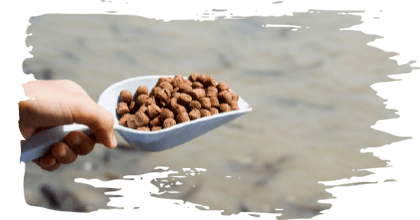
In my opinion, the greater challenge for mycotoxin management in Southeast Asia stems not so much from the climate itself, but from the region’s production systems and market structure.
Many aquaculture farms operate in open, environmentally exposed systems where animals are continually subjected to multiple stressors. These suboptimal conditions make it extremely difficult for farmers to detect early-stage symptoms of mycotoxicosis— particularly because such symptoms are often subclinical and non-specific.
Unfortunately, by the time noticeable performance drops or mortality occurs, the physiological damage is often advanced and difficult to reverse.
Compounding this issue is the fragmented nature of the market.
In such a landscape, effective mycotoxin management must be implemented primarily at the feed mill level—especially to address Fusarium-derived mycotoxins.
However, as noted earlier, the economic incentives to support rigorous control measures are frequently absent, particularly in non-integrated supply chains.
 In summary, while Southeast Asia’s climate does indeed create favorable conditions for mycotoxin development, I believe the region’s core challenge lies in its market structure and farming practices. Addressing this will require a tailored, systems-level approach that combines technical interventions with stronger incentives for preventive feed safety measures.
In summary, while Southeast Asia’s climate does indeed create favorable conditions for mycotoxin development, I believe the region’s core challenge lies in its market structure and farming practices. Addressing this will require a tailored, systems-level approach that combines technical interventions with stronger incentives for preventive feed safety measures.
As alternative and local feed ingredients become more common, do you think we are simply changing the risk profile of mycotoxins— or opening new possibilities for control?
I believe we are seeing both—a shift in the mycotoxin risk profile and, simultaneously, the emergence of new opportunities for more targeted control.
SHIFT IN MYCOTOXIN RISK PROFILES
As the aquaculture sector moves toward increased use of local and alternative feed ingredients— such as agro-industrial by-products, novel protein sources, or underutilized crops—we are indeed reshaping the mycotoxin risk landscape.
These materials can introduce different types of fungal contaminants, including emerging and less-studied mycotoxins.
For instance, while corn and wheat are typically associated with Fusarium toxins like DON and ZEN, local feedstuffs such as palm kernel cake, peanut meal, or cassava by-products carry risks of aflatoxins, OTA, or even cocontamination by multiple fungal species.
So yes, the risk profile is clearly evolving.
OPPORTUNITIES FOR TARGETED CONTROL STRATEGIES
I also see this transition as an opportunity to develop smarter, more locally adapted risk management strategies.
In some ways, working with a more defined pool of local ingredients—where we can map typical contamination patterns—may allow for more proactive and cost-effective control measures across the value chain.
For example, understanding the seasonal trends and storage sensitivities of a particular by-product can help feed mills optimize sourcing, testing, and treatment.
 This shift encourages innovation—not only in detection and detoxification technologies, but also in breeding and processing practices aimed at reducing fungal susceptibility from the outset. The growing interest in circular economy principles and local resilience can drive the development of integrated feed safety strategies, rather than relying solely on broad-spectrum solutions..
This shift encourages innovation—not only in detection and detoxification technologies, but also in breeding and processing practices aimed at reducing fungal susceptibility from the outset. The growing interest in circular economy principles and local resilience can drive the development of integrated feed safety strategies, rather than relying solely on broad-spectrum solutions..
Climate variability is influencing raw material availability and quality. How do you anticipate it will affect the prevalence and profile of mycotoxins in aquafeeds?
Climate change is increasingly recognized as a significant driver of mycotoxin occurrence.
Although research on the topic has expanded considerably in recent years, a notable knowledge gap persists—often resulting in broad generalizations that fail to capture the full complexity of the issue.
 Nevertheless, the evidence is clear: climate variability is set to negatively impact global crop production, not only in terms of quantity but also quality, with direct implications for feed safety.
Nevertheless, the evidence is clear: climate variability is set to negatively impact global crop production, not only in terms of quantity but also quality, with direct implications for feed safety.
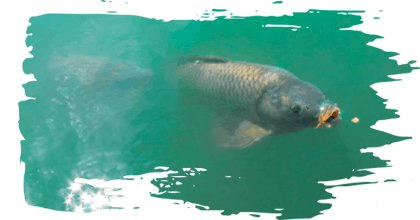
As rising temperatures and shifting rainfall patterns force cultivation zones to shrink or relocate, crops will be grown under increasingly suboptimal conditions—conditions that heighten susceptibility to fungal contamination.
We can anticipate a shift in the fungal landscape.
⇒ Thermotolerant species like Aspergillus are expected to become more prevalent in warmer regions, potentially displacing cooler-climate species such as Penicillium.
This shift will likely alter the mycotoxin profile, leading to a greater incidence of aflatoxins and other heat-favoring toxins.
However, it is not just about temperature…
![]() Phenological changes in crops—the timing of flowering, grain filling, and harvest—will also interact with fungal infection windows, influencing contamination levels and the type of mycotoxins produced.
Phenological changes in crops—the timing of flowering, grain filling, and harvest—will also interact with fungal infection windows, influencing contamination levels and the type of mycotoxins produced.
This raises several critical questions:
 Under which climate scenarios will mycotoxin profiles change most significantly?
Under which climate scenarios will mycotoxin profiles change most significantly? Will “secondary” or emerging mycotoxins become more relevant?
Will “secondary” or emerging mycotoxins become more relevant? What happens to masked mycotoxins under new stressors?
What happens to masked mycotoxins under new stressors? Will current mitigation strategies still be effective?
Will current mitigation strategies still be effective?
From an aquaculture perspective, these uncertainties are particularly relevant.
![]() Many feed mills rely on global commodities— like corn, soybean, and wheat—that are directly affected by climate conditions.
Many feed mills rely on global commodities— like corn, soybean, and wheat—that are directly affected by climate conditions.
With potential changes in crop suitability, ingredient sourcing will need to become even more strategic.
![]() Regions heavily involved in feed ingredient production and export— such as Brazil, Argentina, China, India, and parts of Africa—are already being identified as climate change hotspots.
Regions heavily involved in feed ingredient production and export— such as Brazil, Argentina, China, India, and parts of Africa—are already being identified as climate change hotspots.
The ripple effects on feed safety and cost could be substantial, justifying the increased interest in local produced circular ingredients.
In this context, it is essential that both industry and governments are not only aware of these evolving risks but also equipped with the tools to respond effectively.
![]() We must reinforce and adapt Good Agricultural Practices (GAP) and HACCP-based management systems to address new climatic realities and increasingly unpredictable mycotoxin profiles.
We must reinforce and adapt Good Agricultural Practices (GAP) and HACCP-based management systems to address new climatic realities and increasingly unpredictable mycotoxin profiles.
![]() It will be necessary to revisit regulatory thresholds and reassess which mycotoxins warrant greater attention—particularly those currently deemed low priority.
It will be necessary to revisit regulatory thresholds and reassess which mycotoxins warrant greater attention—particularly those currently deemed low priority.
 Ultimately, climate change is not merely shifting the mycotoxin risk profile—it is redefining it. Going forward, the development of predictive models, region-specific surveillance, and integrated strategies that account for the multifactorial nature of this threat will be critical to safeguarding aquafeed safety—and, by extension, global food security.
Ultimately, climate change is not merely shifting the mycotoxin risk profile—it is redefining it. Going forward, the development of predictive models, region-specific surveillance, and integrated strategies that account for the multifactorial nature of this threat will be critical to safeguarding aquafeed safety—and, by extension, global food security.
Aquaculture systems are increasingly adopting circular models. Do you see this shift introducing new contamination risks—or potentially helping manage them better?
This is indeed a challenging question, as the relationship between circular economy practices and mycotoxin risks in aquaculture remains largely underexplored.
 The shift toward circular models— where by-products and waste streams are repurposed as feed ingredients— offers clear sustainability benefits.
The shift toward circular models— where by-products and waste streams are repurposed as feed ingredients— offers clear sustainability benefits.
However, it also introduces new and poorly understood variables when it comes to feed safety, particularly in relation to mycotoxins.
![]() In the case of plant-based by-products, there is already solid evidence that certain processing methods can concentrate mycotoxins.
In the case of plant-based by-products, there is already solid evidence that certain processing methods can concentrate mycotoxins.
![]() When it comes to animal by-products—such as shrimp head meal, Pangasius oils, and other rendered or hydrolyzed materials increasingly used in aquafeeds—the risks are even less defined.
When it comes to animal by-products—such as shrimp head meal, Pangasius oils, and other rendered or hydrolyzed materials increasingly used in aquafeeds—the risks are even less defined.
While some reports have detected fumonisins (FUM) in shrimp head meal, the source of contamination remains unclear.
In aquaculture, where by-products are often sourced from a wide range of locations and processing chains with varying degrees of quality control, circular systems could also help improve contamination management—provided they are well-designed.
![]() Greater traceability, shorter supply chains, and more localized sourcing of feed inputs can enable more effective quality monitoring and faster responses when problems arise.
Greater traceability, shorter supply chains, and more localized sourcing of feed inputs can enable more effective quality monitoring and faster responses when problems arise.


Which species or farming systems do you consider most vulnerable to mycotoxins, and what mitigation strategies should be prioritized in those cases?
Given the high diversity of aquaculture systems and species, it is not easy to answer this question!
That said, I will approach it from two different perspectives—focusing on species vulnerability rather than specific mitigation strategies, as the latter would require a level of generalization that may not do justice to the complexity of the sector.
LOW-TROPHIC FRESHWATER SPECIES
Low-trophic freshwater species (e.g., tilapia, carp, catfish) are usually produced within business models built on very low profit margins.
Feeds for these species often rely on lower standards, particularly when it comes to mycotoxin control.
While this group of species is generally considered more biologically resistant to mycotoxins, that is precisely where the risk lies.
The combination of tight cost structures, potentially lower-quality feed ingredients, the subclinical nature of mycotoxicosis, and basic farm infrastructure—often exposed to external environmental stressors—creates an inherently complex, multifactorial challenge.
 In other words, this group is probably the most exposed to mycotoxin risks.
In other words, this group is probably the most exposed to mycotoxin risks.
 It is important to note that low-trophic freshwater species account for around 41 % of global aquaculture production.
It is important to note that low-trophic freshwater species account for around 41 % of global aquaculture production.
 This means that even minor losses in growth performance or survival— whether directly or indirectly linked to mycotoxin exposure—can result in billions in direct costs for the sector, not to mention indirect costs related to increased medication use and environmental impacts.
This means that even minor losses in growth performance or survival— whether directly or indirectly linked to mycotoxin exposure—can result in billions in direct costs for the sector, not to mention indirect costs related to increased medication use and environmental impacts.
The economic and operational dynamics of low-trophic freshwater systems make them particularly important when considering the full impact of mycotoxins.
While these species may be more biologically tolerant, they are also more economically vulnerable.
⇒ Subclinical effects can go unnoticed for too long and given, the scale of production and limited margins, even modest losses can accumulate into significant industry-wide impacts.
For these species, cost-effective, tailored mitigation strategies focused on monitoring, feed quality improvement, and farm infrastructure upgrades will be essential.
CARNIVOROUS MARINE SPECIES
When it comes to carnivorous marine species (including shrimp), it is scientifically supported that these animals—particularly those in marine environments—are generally more susceptible to mycotoxins.
⇒ However, they typically benefit from a more favorable cost structure and are fed higher-quality ingredients.
Although their cost structure is favorable, their higher sensitivity to mycotoxins means that the consequences of exposure can be more acute.
In these cases, close monitoring and proper mycotoxin management are strongly recommended.
The return on investment (ROI) for control measures in such systems is typically positive, making prevention not only biologically necessary but also economically sound.


What are some of the practical disconnects you observe between research on mycotoxins and its application in real-world aquaculture operations?
In the aquaculture sector, we are still in the early stages of understanding the impacts of mycotoxins on the various species we cultivate, especially when compared to our counterparts in livestock.
 This is particularly challenging given that, according to the FAO, there are 564 aquatic species being cultivated, not including hybrids.
This is particularly challenging given that, according to the FAO, there are 564 aquatic species being cultivated, not including hybrids.
As I mentioned before, there is a critical need for research that explores the real-world impacts of mycotoxins, particularly using realistic contamination levels and considering multi-mycotoxin exposure.
Unfortunately, some of the research we see today still relies on unrealistic exposure scenarios—using alarmingly high mycotoxin levels that are not representative of what is typically found in real farming conditions.
⇒ This often means the findings are not directly applicable to everyday practices in the industry.
Moreover, many of these studies focus on acute exposure to high levels of mycotoxins over very short periods, under optimal conditions, which fails to mirror the chronic, low-level exposures that are more common in farmed environments.
 This discrepancy between research and real-world conditions risks sending the wrong message to the industry, suggesting that mycotoxin management is not as critical or that its effects are not as widespread as they actually are.
This discrepancy between research and real-world conditions risks sending the wrong message to the industry, suggesting that mycotoxin management is not as critical or that its effects are not as widespread as they actually are.
There is also the challenge of translating academic findings into actionable recommendations for farmers.
Research often does not account for the practical constraints of the aquaculture sector, such as:
- ⇒ The complexity of farm management
- ⇒ Lack of advanced monitoring technologies
- ⇒ The diversity of species being farmed
Bridging this gap between research and application is critical, and it is important that future studies address these real-world factors more effectively.
Furthermore, we must consider regional and sectoral variations, particularly in terms of feed sources, farming practices, and environmental conditions, which can all influence how mycotoxins impact different aquaculture operations.

Digital technologies and data systems are gaining ground in aquaculture. How can they be used to improve detection, prevention, and traceability in mycotoxin management?
Digital technologies and data systems will significantly improve mycotoxin management in aquaculture, especially by enhancing detection, prevention, and traceability.
- ⇒ Automated sensors and analytical tools can provide real-time monitoring of mycotoxin levels in feed and aquatic species, allowing for early identification of contamination.
- ⇒ Non-invasive methods like near-infrared spectroscopy (NIR) can streamline on-site testing, offering immediate results.
- ⇒ Predictive analytics, driven by machine learning and climate data, can forecast mycotoxin risks based on environmental factors and historical trends.
 This helps inform preventive measures, such as adjusting harvest timings or optimizing storage conditions and reducing costs.
This helps inform preventive measures, such as adjusting harvest timings or optimizing storage conditions and reducing costs.- ⇒ Digital supply chain systems can also enable precise tracking of feed ingredients from source to farm.

- This ensures any contamination can be quickly traced, improving response times and food safety measures.
Nonetheless, I believe that the most important point can be Data Integration and Early Detection.
The real power lies in integrating these technologies with broader farm data, including:
 Water quality
Water quality Feeding habits
Feeding habits Behavioral patterns
Behavioral patterns
In aquaculture, where mycotoxicosis often presents subclinically, combining mycotoxin monitoring with behavioral data—such as changes in feed intake or activity levels—enables early detection of issues before they lead to severe losses.
By continuously collecting and analyzing this data, farms can proactively manage risks, adjusting practices in real time to minimize the impact of mycotoxins.
 This holistic approach helps create a robust, data-driven risk management system, which is essential given the often-hidden effects of mycotoxins in aquaculture.
This holistic approach helps create a robust, data-driven risk management system, which is essential given the often-hidden effects of mycotoxins in aquaculture.

Beyond binders and detoxifiers, where do you see potential in areas like gut health, immunity, or microbiome management for mitigating the impact of mycotoxins?
Animal farming is inherently multi-factorial, with animals constantly exposed to a variety of stressors— and this is even more pronounced in aquaculture.
Most aquaculture systems are still exposed to the external environment and managed with relatively basic farm infrastructure, with the notable exception of the salmon industry and a few high-value species produced under RAS.
Within this context, mycotoxins become “just another factor to manage” in a long list of operational and environmental challenges.
Too often, solutions in the field—be it phytogenics, pre/pro/post-biotics, or traditional mycotoxin binders and detoxifiers—are developed and marketed in silos.
⇒ Their integration into broader health and performance strategies is limited, even though the reality on farms demands a more systemic and synergistic approach.
To answer your question directly:
“Yes, I strongly believe that mycotoxin management in aquaculture must evolve into a more holistic paradigm.”
Rather than focusing solely on reducing the impact of a few well-known, regulated mycotoxins, we should integrate broader gut health, immunity, and microbiome strategies into our management toolbox.
This is particularly important because feeds often contain a complex mixture of emerging or poorly characterized mycotoxins, for which we have no specific countermeasures.
 By adopting multi-functional and synergistic approaches, we can better support the overall health and resilience of aquatic animals. In a sector where precision is still evolving, building more robust biological systems may offer a more sustainable and effective defense against mycotoxin-related risks.
By adopting multi-functional and synergistic approaches, we can better support the overall health and resilience of aquatic animals. In a sector where precision is still evolving, building more robust biological systems may offer a more sustainable and effective defense against mycotoxin-related risks.

Given the global nature of aquafeed trade, how do regulatory differences across regions impact the control and perception of mycotoxins in aquaculture?
That is a very important question—thank you for raising it.
Apologies for referencing my most recent publication again, but this is also a key topic we explore in the paper.
 As we argue, mycotoxin regulation in aquaculture is still largely absent, inconsistent, or even misleading across regions.
As we argue, mycotoxin regulation in aquaculture is still largely absent, inconsistent, or even misleading across regions.
The topic is complex and challenging to fully address in a short response, but when we focus specifically on global commodity trade, the need for harmonized regulatory standards becomes clear.
Given the sheer volume and diversity of feed ingredients traded internationally—many of which are not species-specific—a general regulatory framework applicable to all animal production sectors could be a practical first step.
In fact, such frameworks already exist for certain commodities and regions, and expanding them to cover a broader spectrum of feedstuffs would offer immediate benefits to both aquaculture and livestock industries, with minor economic consequences.
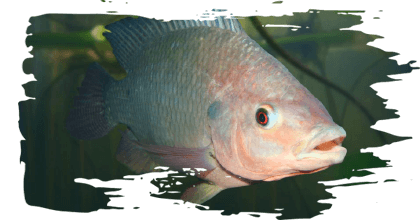
That said, aquaculture does require a more nuanced approach.
Species-specific sensitivity to mycotoxins varies widely, and some aquatic species—such as certain fish and shrimp—may be more prone to mycotoxin accumulation in muscle or offal.
 In regions where these by-products are consumed, this raises potential food safety concerns.
In regions where these by-products are consumed, this raises potential food safety concerns.
Of course, implementing regulatory guidelines also involves inspection and monitoring costs, which must be considered, especially in developing markets. But in the long term, harmonized and science-based regulations—complemented by targeted monitoring programs—would significantly improve feed safety and build trust across the global aquafeed value chain.

Looking ahead, what knowledge or innovation gaps do you think we still need to address to build a more resilient and forward-thinking approach to mycotoxins in aquaculture?
Looking ahead, there are several critical knowledge and innovation gaps that we need to address to build a more resilient and forward-thinking approach to mycotoxin management in aquaculture.
![]() BIOMARKERS FOR MYCOTOXIN EXPOSURE
BIOMARKERS FOR MYCOTOXIN EXPOSURE
Given the generally subclinical nature of mycotoxicosis in aquaculture species, developing biomarkers for the early detection of mycotoxin impact in fish and shrimp would be a significant advancement.
 Biomarkers could provide veterinarians with a reliable tool to diagnose mycotoxin exposure before more severe health effects, such as disease vulnerability or performance loss, manifest.
Biomarkers could provide veterinarians with a reliable tool to diagnose mycotoxin exposure before more severe health effects, such as disease vulnerability or performance loss, manifest.
Currently, aside from some limited examples, such as the ratio of sphinganine (Sa) to sphingosine (So), as a biomarker used to assess exposure to fumonisins, there are no validated biomarkers for aquatic species.
![]() REAL-TIME HEALTH AND BEHAVIOR MONITORING
REAL-TIME HEALTH AND BEHAVIOR MONITORING
Considering the asymptomatic nature of mycotoxicosis, coupled with the complexity of aquaculture production systems, real-time health and behavior monitoring of aquatic species is not yet feasible on a large scale (with few exceptions, e.g., in the salmon industry).
Therefore, AI-driven models that correlate feed mycotoxin levels with general animal performance, including external factors like environmental conditions and farm management practices, could provide a more holistic understanding of mycotoxin impacts.
 These models could help in identifying patterns that are difficult for human observation alone, such as subtle changes in feed intake or behavior that may indicate mycotoxin exposure.
These models could help in identifying patterns that are difficult for human observation alone, such as subtle changes in feed intake or behavior that may indicate mycotoxin exposure.
By integrating these advanced technologies, we could create predictive systems that anticipate risks, allowing for proactive mitigation strategies, rather than reactive ones.
This would represent a major step forward in managing mycotoxins in aquaculture, helping farms:
![]() Detect problems earlier
Detect problems earlier
![]() Optimize their operations
Optimize their operations
![]() Prevent significant damage to both fish health and farm profitability
Prevent significant damage to both fish health and farm profitability
![]() MULTI-MYCOTOXIN EXPOSURE
MULTI-MYCOTOXIN EXPOSURE
The development of more robust and comprehensive research on the multimycotoxin exposures commonly faced in real-world aquaculture conditions is essential.
Too often, research is conducted under highly controlled conditions with unrealistic toxin levels, which does not translate to the complex, multifactorial environment of actual farms.
Real-world studies, coupled with advanced data analytics, could provide more accurate models for how mycotoxins interact with other stressors, such as poor water quality, disease, and environmental conditions, and lead to more actionable insights for the industry.

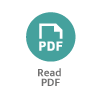

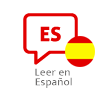
 Micotoxicosis prevention
Micotoxicosis prevention